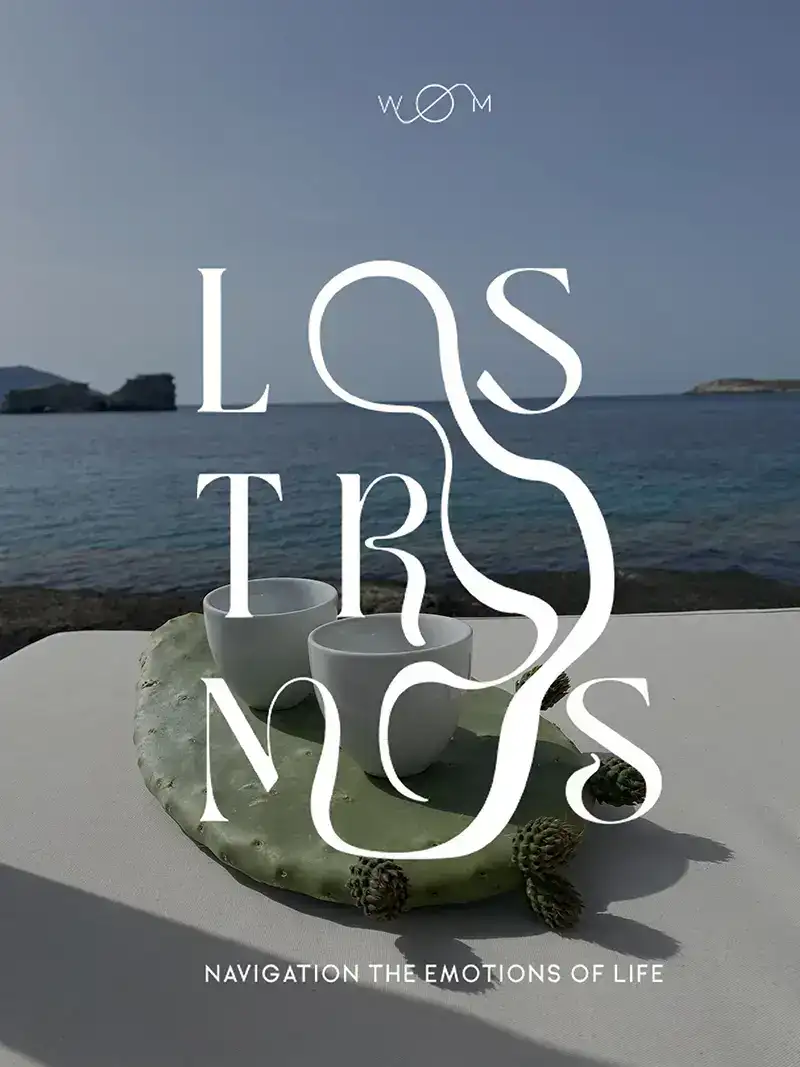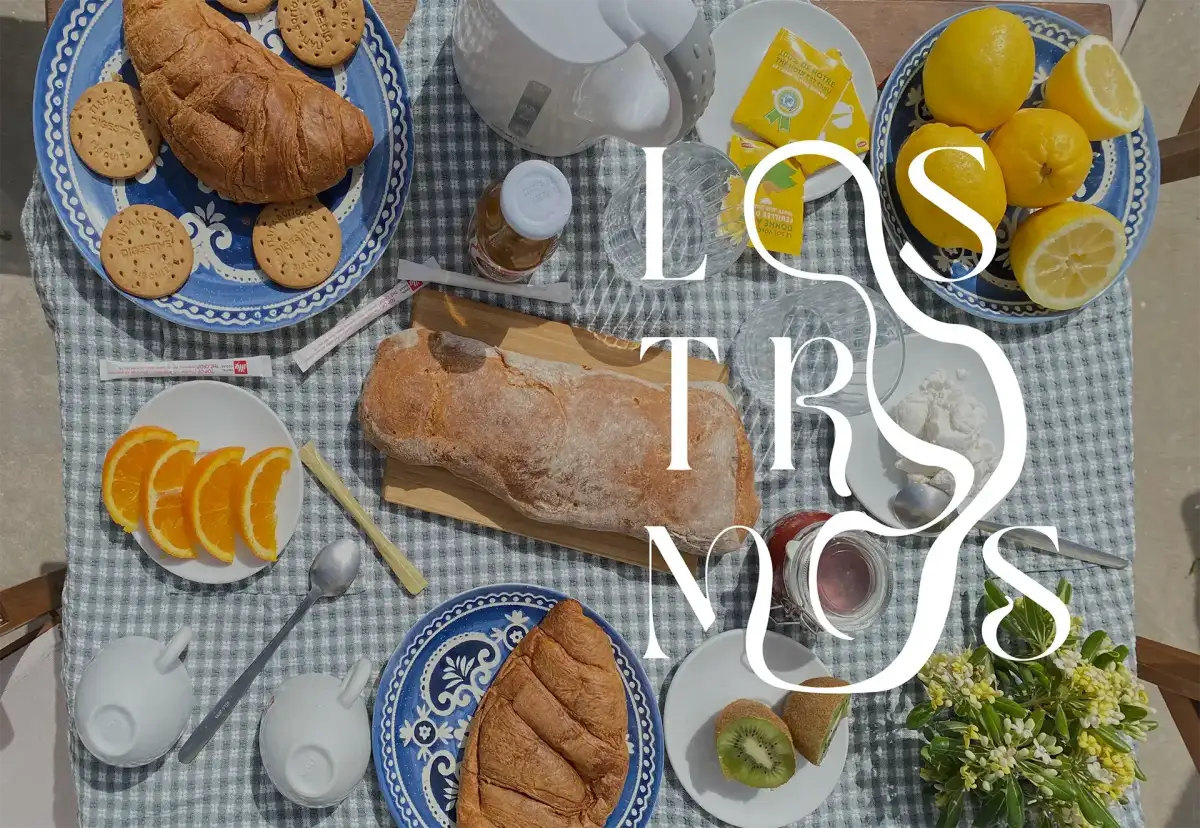brand positioning
Lostromos
Branding for Boutique Hospitality

Overview
Deliverables
· Positioning strategy for niche hospitality
· Naming and payoff development
· Logo and integrated visual system
· Color palette and typographic system
· Tone of voice and multilingual storytelling
· Guest journey and pre-arrival communication
· Art direction for content and reference set
#branding agency for boutique hotels #hospitality branding experts #brand strategy for luxury retreats #agenzia comunicazione hotel indipendenti #visual identity for design hotels
How we gave voice, shape, and story to a Greek retreat for modern dreamers.
THE CHALLENGE
Lostromos is a boutique hospitality project born inside a traditional syrma a boat garage carved into coastal rock, typical of the Cycladic archipelago. A rare and architecturally refined space, yet entirely absent from the digital landscape. No website. No name. No brand identity.
Its physical location, on the margins of the chorio (village), presented a perception paradox: too hidden for mass tourism platforms, yet not remote enough to suggest true seclusion.
This project entered a complex, high-expectation market:
– Travelers with high spending power, design awareness, and aesthetic sensibility
– Experience buyers who choose destinations through editorial curation, lifestyle features, and organic media coverage
– Curators and photographers in search of authentic, off-platform locations
The real challenge?
To build a recognizable, editorial-grade identity able to justify a premium rate and position the property within the new wave of cultural Greek hospitality.
STRATEGIC INSIGHT
In high-end tourism, storytelling is what turns a “property” into an editorial destination.
And today, lacking a digital signal is a strategic liability, even when your concept is based on silence and invisibility.
We developed a brand architecture designed to:
– Turn physical invisibility into symbolic desirability
– Speak to a selective audience through subtle cues: materiality, spatial codes, cultural references
– Integrate naming, tone, and identity into a coherent, minimalist, high-culture system
The name Syrma was preserved for its architectural authenticity.
But it was paired with Lostromos, the Greek nostromo: the one who navigates, reads the stars, leads the way. A strong, precise name that frames the experience not only as a physical escape but as an inner voyage.
THE IDEA | From physical space to symbolic presence
We transformed a boat shelter into a landmark for contemporary curators.
This project doesn’t rely on slogans, it speaks through codes: tactile, visual, linguistic.
What we delivered:
– A naming system rooted in Cycladic topography, avoiding exoticism and cliché
– A visual identity inspired by nautical signage, constellations, and the essential geometry of the islands
– A color palette anchored in sea-weathered stone, bleached sand, and mineral tones
– A typographic system that evokes space and rhythm, not decoration
– A pre-arrival narrative designed around silence: no marketing phrases, just a slow, elegant, editorial tone
TAKEAWAYS
• Naming in hospitality it’s an editorial and cultural discovery tool. If it doesn't link to real topography or living vocabulary, it won’t be searched, remembered, or shared.
• A boutique hotel’s visual system must behave like an architectural language: rigorous, consistent, mental-material. Identity doesn’t decorate it structures the narrative space.
• Absence is a competitive asset only when it is strategically designed. In luxury travel, silence holds value only when it’s part of a coherent system, not a lack of strategy.
• Being “offline by choice” is a myth. Even the most discreet hospitality projects need a minimal but structured digital presence to be found by editors, buyers, and high-end guests.
• In a crowded archipelago of generic “boutique hotels,” only brands with real symbolism, distinctive codes, and architectural storytelling gain access to the circuits of true desirability.


Understanding Brand Positioning: A Strategic Asset, Not a Slogan
In today’s saturated markets, launching a new brand without a clear brand positioning is like setting sail without a compass. Brand positioning is not a tagline or a color palette it’s the strategic core that determines how a brand is perceived in the minds of its audience compared to competitors. For any executive leading the launch of a new venture, brand positioning is the framework that defines who the brand is for, what it stands for, and how it differentiates itself in a meaningful way. It connects business strategy to customer perception, shaping everything from messaging to product design and customer experience.
Positioning is about owning a unique space in the customer’s mind. Apple didn’t become iconic by selling computers it positioned itself as a creative, design-forward alternative to the status quo. Similarly, Patagonia didn’t win loyalty by selling jackets, but by occupying the ethical frontier of outdoor gear. These examples show how effective brand positioning creates long-term value far beyond product features. It guides internal decisions, fosters loyalty, and makes marketing more efficient by reducing noise and clarifying the brand’s voice in the marketplace.
From Insight to Strategy: What Brand Positioning Requires
A proper brand positioning strategy is rooted in rigorous analysis. It starts with understanding the competitive landscape: What are others saying? What spaces are over-saturated? Where is there white space that the brand can legitimately claim? This involves market mapping, competitor benchmarking, and qualitative and quantitative audience research. Data alone, however, is not enough. A strategic reading of those signals is crucial to identify unmet needs, emerging behaviors, and aspirational values that the brand can align with.
At this stage, cross-disciplinary thinking becomes essential. Analysts, brand strategists, designers, and even sales teams contribute to shaping a positioning statement that is not only distinctive, but credible and sustainable. A common pitfall for new brands is to chase trends or overpromise. Strategic brand positioning avoids this trap by aligning the business’s capabilities with market opportunity and cultural context. This is where experience matters: crafting a positioning that can grow with the company, adapt to future shifts, and anchor all brand expressions.
Why Brand Positioning Is a Growth Engine
The impact of effective brand positioning is measurable. Brands with a well-defined positioning enjoy higher customer retention, better conversion rates, and more efficient go-to-market strategies. They require less effort to explain themselves to consumers and can command premium pricing thanks to their perceived value. More importantly, a strong positioning allows a company to scale with clarity. Whether launching a new product line or entering a new market, brand positioning acts as a strategic blueprint for decision-making.
Executives planning to launch a new brand often focus heavily on operations and product development. But without positioning, even the best product may fail to connect with its audience. Positioning informs the business narrative and internal culture, uniting stakeholders around a shared direction. It is not an expense, but a foundational investment one that often determines whether a brand gets noticed or disappears. In an era of noise, brand positioning is the quiet strategy that builds lasting resonance.

